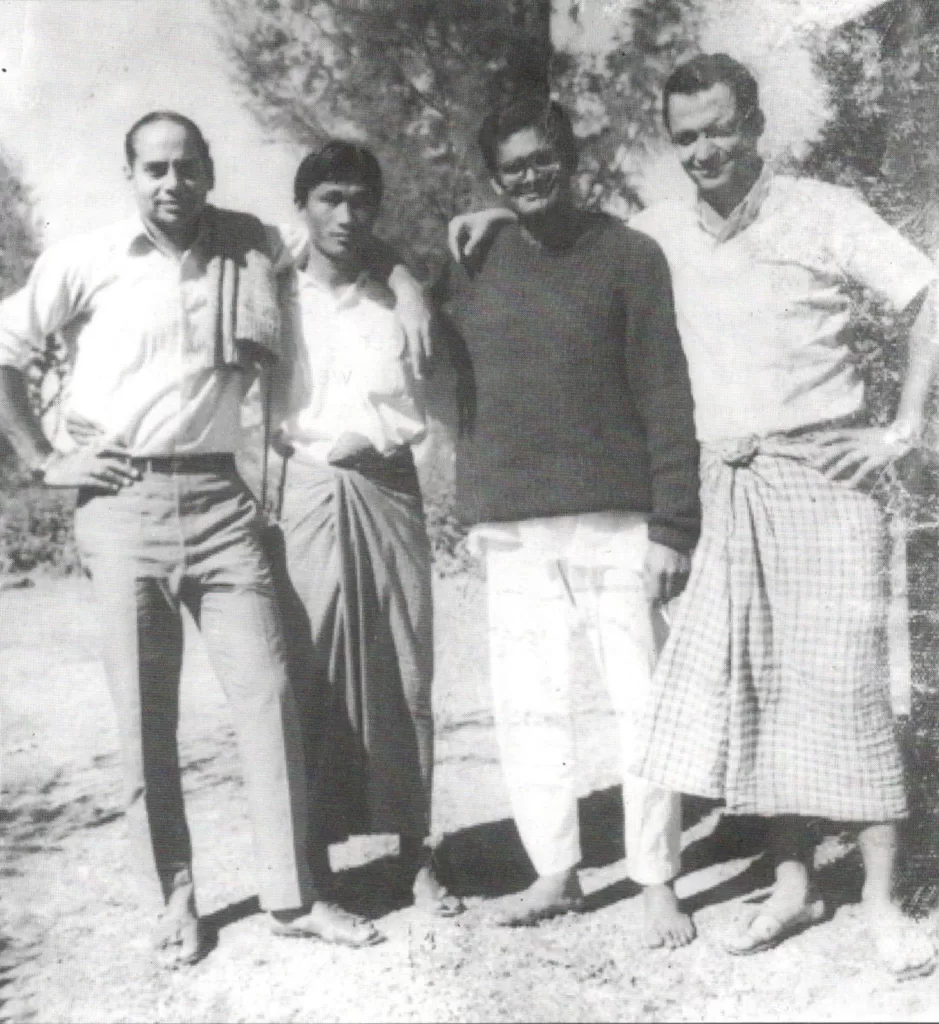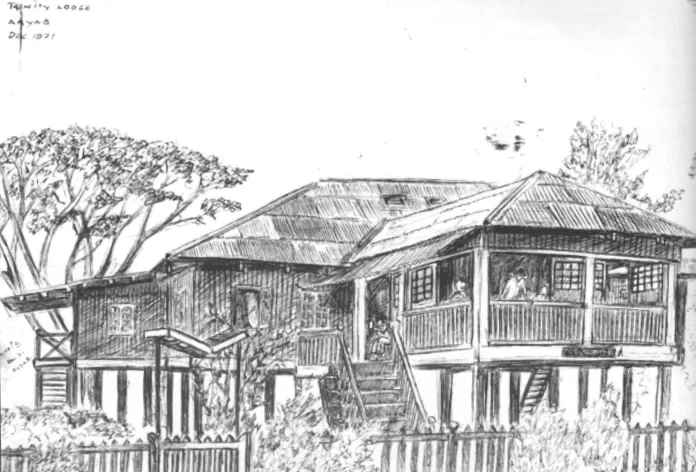The words in my log book are faded and the pages show the yellowish tinge of age, but the memory is alive and vivid as though it happened just yesterday. The entry says that the mission was flown in Twin Otter AP-AWF departing Dacca at 22:30 Z (04 Dec 1971) and arriving at Akyab (now known as Sittwe) in Burma at 00:30 Z (05 Dec 1971) for a total flight time of 02:00 hrs.
At about 3 pm on 4 December, an IAF MiG-21 came on a strafing run and destroyed one of the 3 Twin Otters that had been parked in camouflaged aircraft shelters around the airport. It was a chilling sound to hear the thud of the large caliber canon as they destroyed the aircraft.
Following the destruction of one of three PIA Twin Otters in the afternoon, the decision was made to evacuate one of the two remaining aircraft from the theater, while leaving the last remaining aircraft behind to evacuate 14 Squadron pilots, as and when required.
The late Captain Bashar (everyone’s ‘ustaad’) and I were asked to operate the flight. We were instructed to go to the airport just after midnight and retrieve a sealed envelope from the Operations office which contained the plan. Upon arriving at the airport, our access to the office was delayed by a bombing raid that had us sheltering in a trench until the ‘all clear’ was sounded. The deployment plan contained route charts, approach plates and instructions to proceed to Akyab, planning our arrival there to coincide with the published airport tower opening time of 0700 LT (UTC +0630). This meant departing Tezgaon at 0430 LT (UTC +0600).
Our passengers consisted of the PIA maintenance staff and other personnel and the families of some front line officers, notably the wife and children of Major Patrick Tierney, a Pakistan Army helicopter pilot.
We were advised that the Anti-aircraft units would hold their fire for a window of five minutes bracketing our departure, and the mission was to be flown at low level to avoid interception – which later proved to be very sound advice.
Captain Bashar wanted me to fly the mission with him in the right seat. We departed at 22:30 UTC with all external and cabin lights turned off. In consultation with Captain Bashar we agreed to fly at about 200-ft AGL following the general track of the Brahmaputra River to avoid any obstacles. The Twin Otters were not equipped with a radio altimeter, which would make our altitude indication subject to variation as the local barometric pressure changed; this proved significant later on, but it was still the better choice. I found out later on (when I was working in Africa via an Indian helicopter pilot based in Agartala in 1971) that we were actually being tracked by a MiG-21, but the pilot was unable to get an accurate fix on us, as IAF MiG-21s had limited ground clutter suppression capability.
The flight proceeded smoothly until we crossed the coast (which we could see on our weather radar). Suddenly the stars disappeared and the aircraft was filled with acrid smoke. We could see no immediate evidence of an aircraft malfunction and had no choice but to continue straight ahead. After what seemed like an interminable time, but was probably no more than 15 minutes, the stars re-appeared and the smoke dissipated. A few days later when discussing this with the No 14 Squadron pilots we concluded that we had flown into smoke that was billowing from oil storage tanks that had been hit by enemy bombardment. We were well to the west of Chittagong, but the prevailing wind was from the East and had carried the smoke across our flight path.
Luckily, we were in the clear now, and the disadvantage of flying low with an inaccurate altimeter setting caught our attention. I saw something white flash by the side window on the left side and was able to discern from the shape that it was the sail of a fishing vessel! We decided to adjust our indicated flight altitude slightly upward to compensate for the error.

Just abeam Cox’s Bazaar, Captain Bashar and I saw lights from several ships up ahead. We were closing very quickly because of our low altitude, and the Captain suggested we take evasive action; I suggested that staying the course might be safer as taking evasive action might have prompted a trigger-happy gunner on one of the ships to decide we were hostile. We flew right over the center of the largest ship which was some kind of a cargo vessel with the holds wide open. They were off-loading supplies to a flotilla of smaller ships and there appeared to be some small armed escort vessels as well. We were never able to establish the identity of these ships, but suspected this might have been part of a sea-borne assault on the very south.
Shortly after the sky started to lighten, we were now in Burmese airspace. Approaching Akyab we climbed up to 3,000 ft to try to establish VHF contact with Akyab tower; our sealed envelope had instructed us that our deployment had been approved by the Burmese authorities and they would be aware of our arrival. This proved far from the truth, in a slightly comical way. After trying repeatedly to contact the tower, we decided to follow the ICAO ‘loss of communication’ procedures and fly by the tower waggling the wings. This would hopefully prompt either radio contact or perhaps landing clearance using a green VEREY light. I should mention that the PIA Twin Otters had been previously painted in camouflage colours instead of the standard PIA paint scheme.
The terminal building in Akyab was a wooden affair with the tower perched on top of the roof on a set of wooden stilts. Access to the tower from the roof was via a set of wooden stairs on the rear of the tower cab itself. As we flew by at low altitude, we saw the tower door burst open and witnessed a man clutching a ‘dhoti’ around him, practically falling down the stairs in his haste to get out. I guess his aircraft identification skills were somewhat limited, and we had lost the on-duty air traffic controller!
Captain Bashar and I decided we had no option but to land without getting a clearance. It turned out that the ‘deployment plan’ had not really been communicated to the Burmese. The local Pakistani charge-de affaires turned out to be a Bengali who promptly vanished when he saw us. We were taken for questioning by Burmese intelligence, and then kept in house arrest in Burma for almost two months.
One a final note, some 14 Squadron pilots arrived in Akyab on the last Twin Otter and the plan to get them repatriated to the Western front never materialized as they were kept under house arrest with the rest of us. I learned later while in Africa, that the Indians had planned to mount an airborne commando raid to capture all of us and herd us off as POWs. The plan never came through, partly because the Burmese government wished to stay neutral in the conflict. I am sure that the Burmese house arrest was the preferred option!




